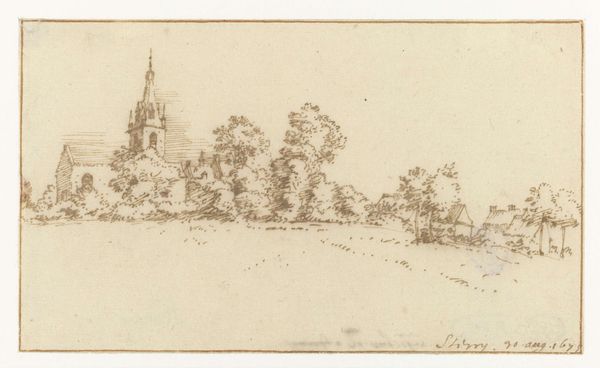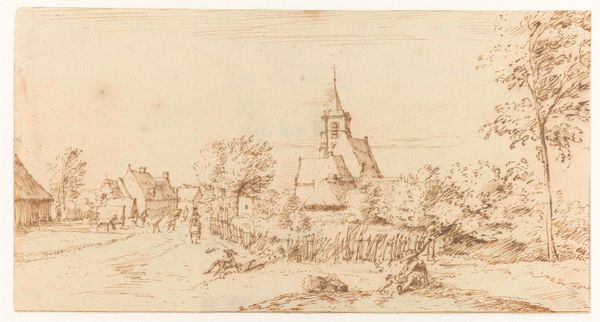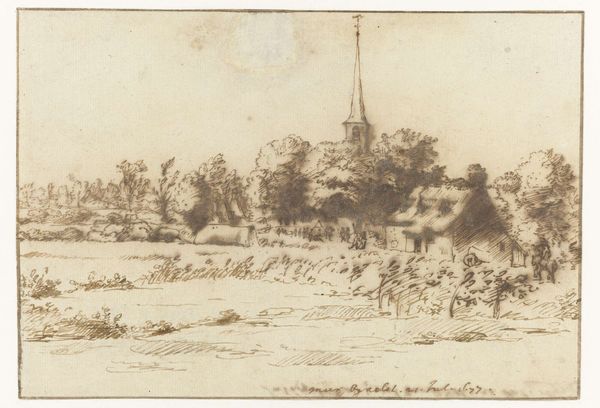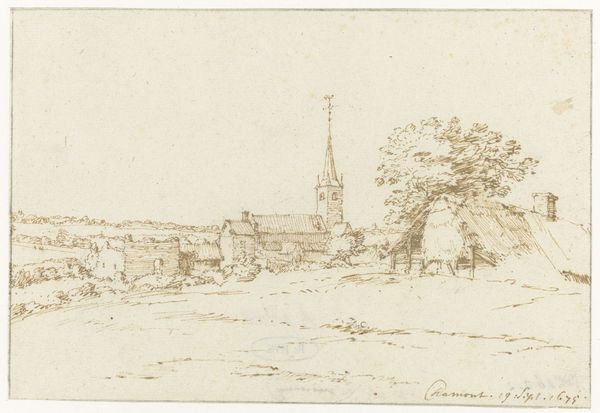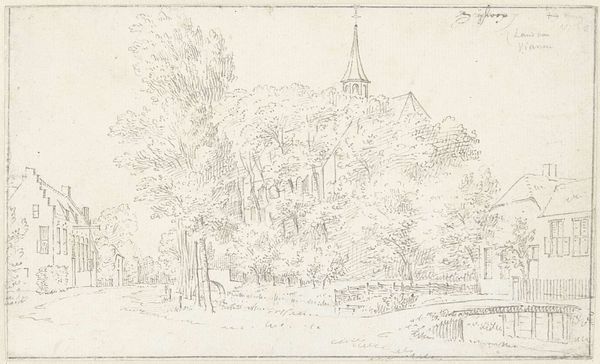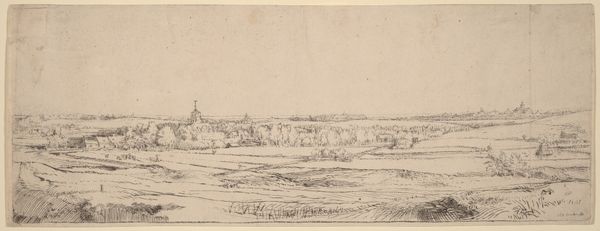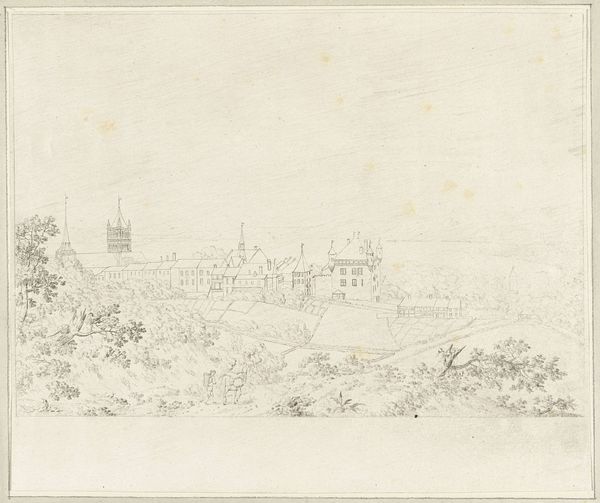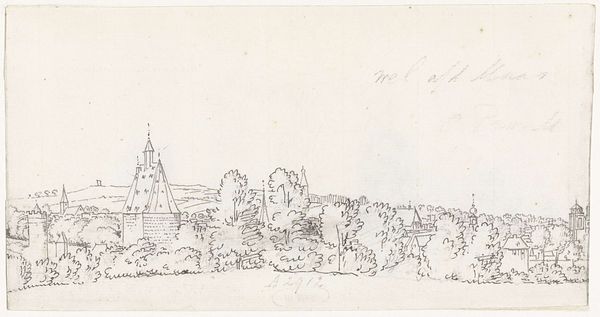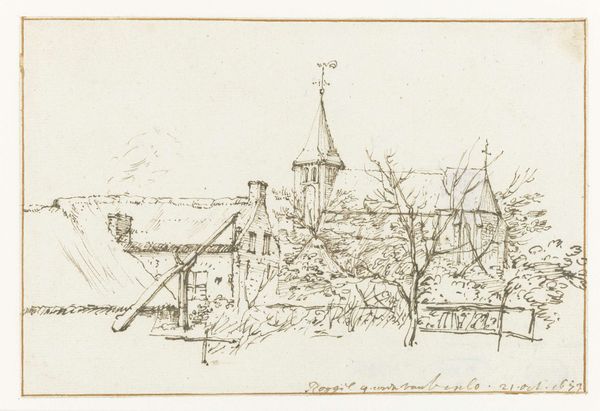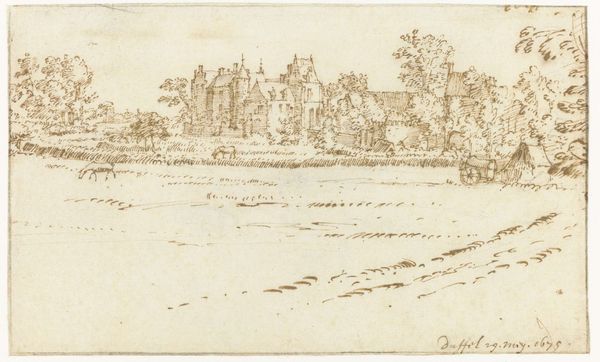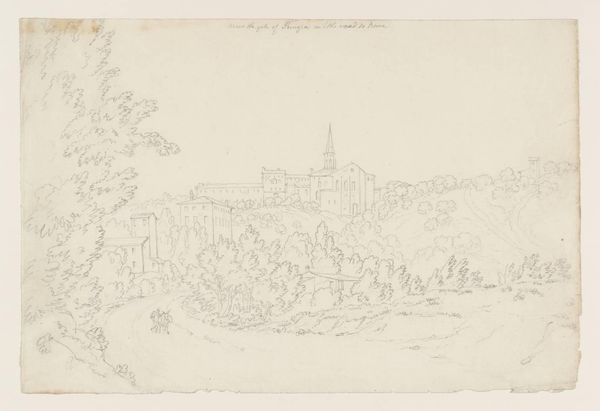
drawing, ink
#
drawing
#
baroque
#
dutch-golden-age
#
landscape
#
etching
#
ink
Dimensions: height 102 mm, width 171 mm
Copyright: Rijks Museum: Open Domain
Constantijn Huygens II created this drawing of Lincent with pen in 1679. Huygens, a Dutch Golden Age artist, lived in a society where class distinctions shaped artistic expression. The artwork uses a light brown ink to depict a landscape featuring a church, houses, and greenery. It evokes a sense of pastoral tranquility, a scene of everyday life in the countryside. The church at the center symbolizes the dominant religious and social structures of the time. Huygens' choice to represent this scene through drawing, a medium often associated with sketching and preliminary work, highlights the intimacy and immediacy of the moment captured. The artwork doesn’t explicitly challenge the status quo. Instead, it provides a glimpse into the world as seen through the eyes of a privileged individual, reflecting both the beauty and the inherent social dynamics of 17th-century Dutch society. The emotional quality of the artwork allows for a personal connection to a distant time, inviting reflection on how much has changed and how much remains the same.
Comments
No comments
Be the first to comment and join the conversation on the ultimate creative platform.
